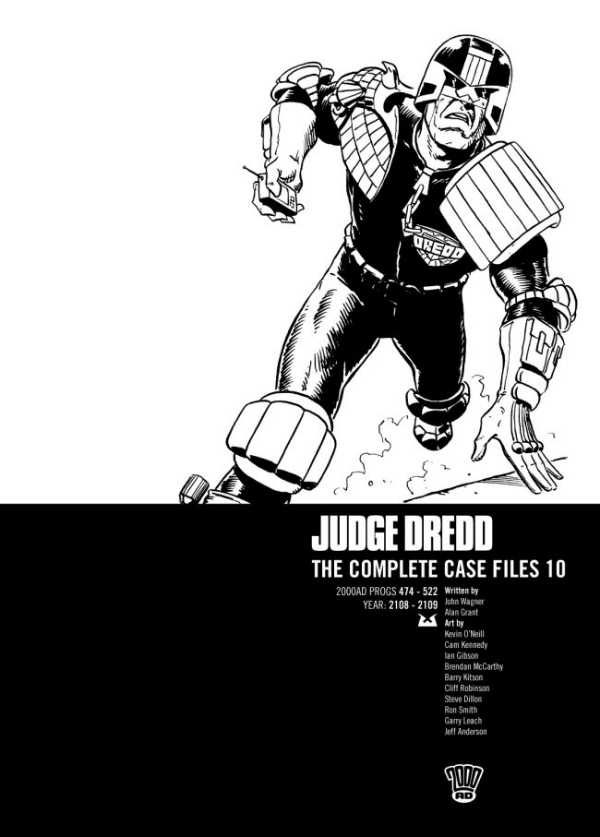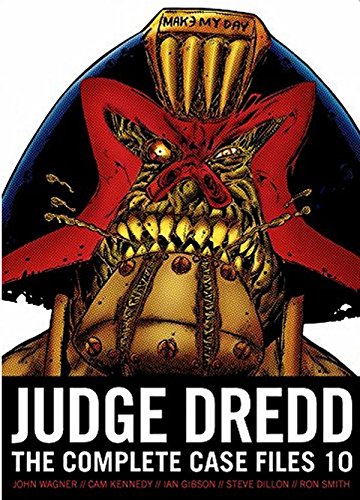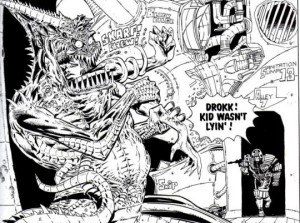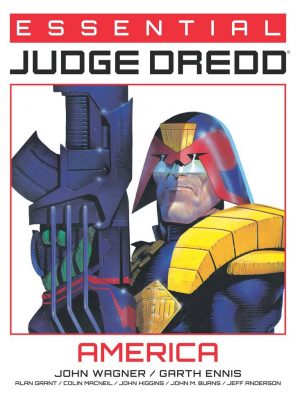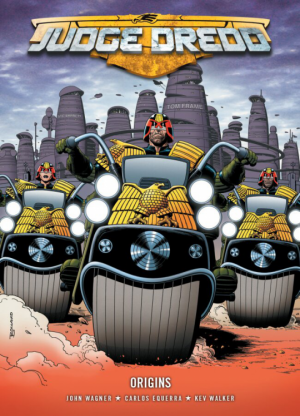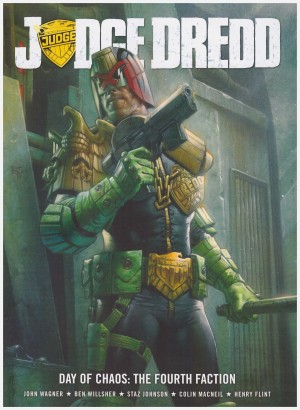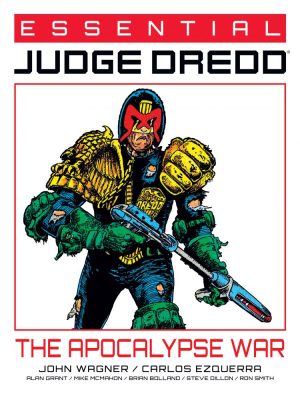Review by Frank Plowright
The Judge Dredd material beginning this volume continues the return to form of Case Files 9, but thereafter it’s very patchy. Sometimes the writing team of John Wagner and Alan Grant hit one out of the park, but far more often they’re coasting, and this on the stories finally credited under their own names rather than the T.B. Grover pseudonym. The greatest selection of artists to date in a Case File, sixteen in all (not counting contributions to the jam story), make this volume very much the good, the bad and the ugly.
In contrast to the previous three volumes, most of the longer stories are among the best. Cam Kennedy’s self-caricature in ‘The Art of Kenny Who’, undergoes demeaning treatment from all he encounters in Mega-City One, and Kennedy introduces a memorable character in ‘The Taxidermist’, later to be seen in his own graphic novel. The hapless Sardini is tasked by a mob boss with stuffing some recently departed henchmen, but the judges are searching for the missing corpses. Both stories feature an innocent caught in circumstances beyond their control, and while played for laughs they’d not work without also engendering sympathy. ‘The Genie’ has Dredd at his grumpy best.
All three of Kevin O’Neill’s Judge Dredd stories are here. Do they play to his admirably grotesque art, or would he have transformed My Little Pony into something similar? O’Neill drawing a typically heroic Dredd rather than adapting him to his style was an interesting choice. The alien only able to say ‘Vark’ started life as Wagner and Grant joking about how characters on then relatively new soap opera Eastenders would swear, and O’Neill excels with his designs for slogan-plastered buildings and vehicles in ‘The Law According To Dredd’, in which Dredd meets his Cursed Earth counterpart.
Brendan McCarthy had come a long way since his Dredd strips of 1979, but he works far better in colour. Neither ‘Atlantis’ nor ‘The Witness’ approaches the best of Dredd, but McCarthy tailors his style to each, with the episode set on an undersea base midway across the Atlantic one of stark contrasts and the designs for the Brit-Cit Judges are his. His final Dredd work for twenty years, ‘The Blood Donor’, starts well, but the script devolves into another chase. The good start and subsequent by the numbers sequence is a problem that plagues several other stories here, not least Kim Raymond’s best by far in which Dredd is interrogated and Ron Smith’s final Dredd strip for 2000AD.
Oddly named martial artist Stan Lee would return, but his first appearance is nothing special. Barry Kitson is prominent in this volume, and his best is ‘Dead Ringer’ with Dredd investigating the sighting of man who’d disappeared years previously. All too infrequent Garry Leach art is always welcome. ‘Attack of the 50 Foot Woman’ is as described, ‘The Comeback’ is the 22nd century revival of one Jaxon Prince, but ’10 Years On’ was obviously produced to a shorter deadline. The Steve Dillon drawn ‘Slick Dickens’ has a good twist, and Ian Gibson’s ‘Paid With Thanks’ originated with Grant musing about whether a scheme of invoicing companies merely for sending an invoice might be legal and lucrative. ‘What If Judges Did Ads?’ is a Mad style parody with assorted artists delivering a single page. Distanced from the TV ads they’re based on by two decades only Gibson’s launderette pastiche still raises a smile.
At least the volume ends on a relatively high note with ‘So You Want To Be A Judge?’, with Wagner and Grant reminding everyone again what gits the judges are, and one of only two strips drawn for 2000AD by the promising Paul Hardy.
